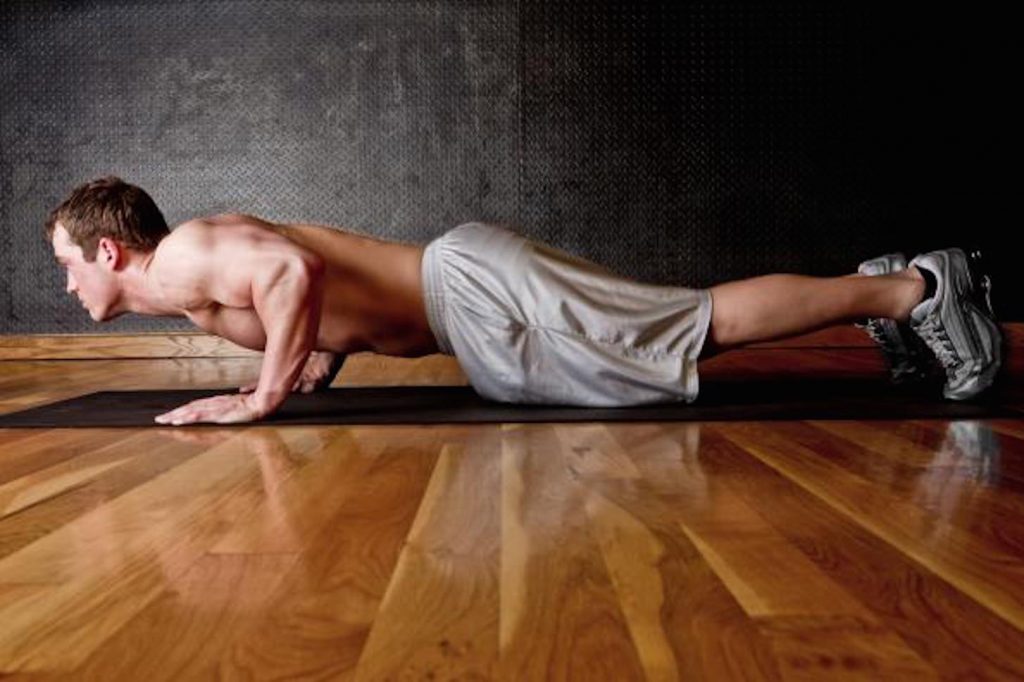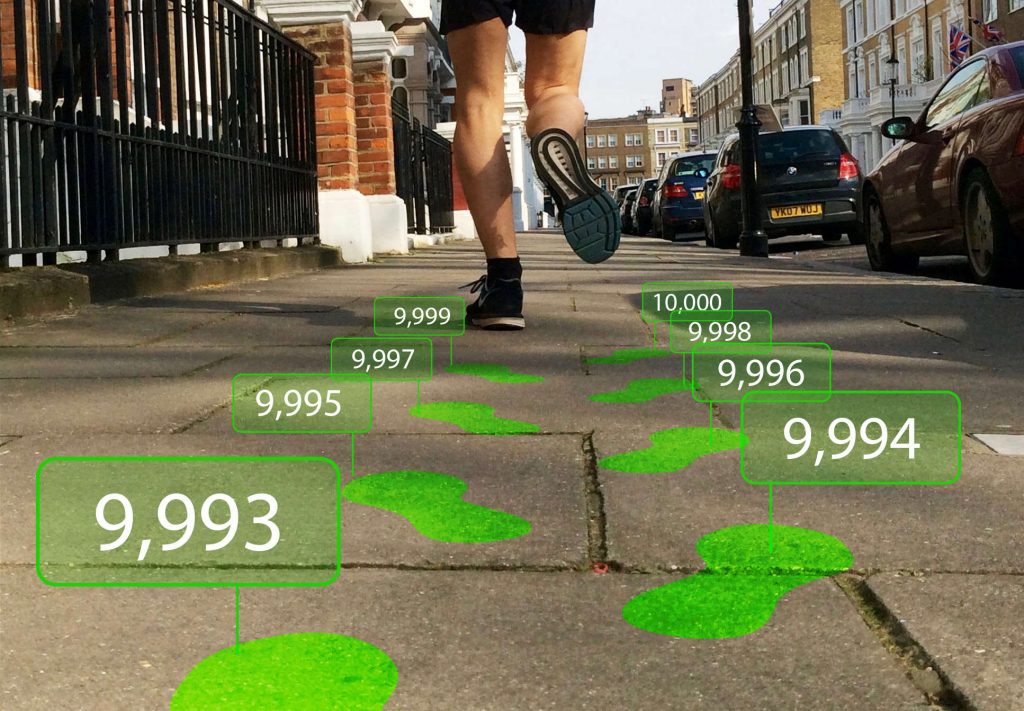So you think you’re pretty healthy. You hit the weights a few times per week. And you get one or two HIIT sessions in regularly. You maintain healthy body fat levels and go out of your way to eat the healthiest foods you can afford…
Unfortunately, if you spend most of your day sitting—sitting in your car on the way to work, sitting at your desk all day, sitting on the drive home and sitting on the couch to unwind after a long day—then you’re not as healthy as you might believe.
Even worse, you still have a higher risk of developing debilitating diseases in spite of your best efforts to live a healthy life.
Don’t worry. You’re not alone.
One of the harshest realizations I’ve had after 18+ years in the fitness industry was that I was living a sedentary lifestyle. Sure, I’ve been crushing my strength training workouts and getting some cardio in—but recent research says that it’s not enough.
And it makes sense that a few hours of exercise a week—even if it’s hard training—isn’t enough to stay healthy and ward off disease. Especially when you consider that for the majority of humankind’s existence, we hunted and gathered our food.
Gyms and weight loss diets weren’t needed because life itself was exercise and food was scarce. Staying alive was how we stayed fit. Even if some lucky group of nomadic humans found a lush area filled with plentiful sources of food and water, it was still nowhere near the overabundance that we have in modern societies.
There were no grocery stores, Costcos, Whole Foods, microwave ovens, WiFi connections, or smart phones to search for the nearest restaurants. Aside from some cave drawings, horsing around and perhaps some storytelling around the fire, there wasn’t much in the way of entertainment either.
And we don’t even have to imagine Paleolithic times to understand how much life has changed here in the US. In 1890, more than 70% of the workforce had jobs involving manual labor and 43% were farmers. Life and work were exercises for most people until very recently.
This transition from active lifestyles to our modern sedentary ones has had a big impact on our weights, waistlines, and incidence of disease.
More recent research into the negative health impacts of inactivity has led Dr. James Levine, director of the Mayo Clinic-Arizona State University Obesity Solutions Initiative and inventor of the treadmill desk, to claim that:
[tweet_dis excerpt=” Sitting is more dangerous than smoking, kills more people than HIV, and is more treacherous than parachuting. We are sitting ourselves to death.””][/tweet_dis]
“Sitting is more dangerous than smoking, kills more people than HIV, and is more treacherous than parachuting. We are sitting ourselves to death.”
Although it seems like an extreme statement—especially since sitting seems so innocuous—he’s not the only scientist who believes it. It turns out that is doing a lot more harm to your body than we initially thought. In fact, you may want to stand up, take a walk or drop and do some push-ups before reading about these five deadly effects.

Sitting Effect #1: Prolonged sitting is linked to a greater risk of developing heart disease
Heart disease is the leading cause of death for both men and women in the US. According to the CDC, about 610,000 people die from heart disease every year. Although smoking, high blood pressure, and high cholesterol are key risk factors for developing heart disease, physical inactivity is turning out to be an important factor.
Research published in the American Journal of Epidemiology found that men and women who spent more than 6 hours a day sitting died at an earlier age than people who sat 3 hours a day or less. The study surveyed 53,440 men and 69,776 women.
They started out healthy but over the course of the 14-year follow-up, the researchers saw a higher rate of mortality among the people who spent the most time sitting. Another important finding was that the time the study participants spent sitting was an independent risk factor regardless of their physical activity level.
So even if they were physically active, sitting still was associated with a higher risk of an earlier death.

Sitting Effect #2: Prolonged sitting is linked to cancer
Sitting is also linked to an increased risk of developing certain cancers. A paper published in the Journal of the National Cancer Institute conducted a meta-analysis of 43 observational studies that included 4 million people and 68,936 cancer cases to assess the relationship between TV viewing time, recreational sitting time, occupational sitting time, and total sitting time with the risk of various cancers.
What they found was a statistically significant increased risk of developing colon, endometrial, and lung cancer. They also found that the risk increased with each 2-hour increase in sitting time.
This risk was independent of how physically active someone was.

Sitting Effect #3: Prolonged sitting increases the risk of obesity
If you’ve been listening to Legendary Life for a while, I’m sure you’re well aware of the importance of diet and exercise for fat loss and optimal health. What you may not know is the impact that prolonged sitting has on the number of calories you burn each day and subsequently the amount of fat you carry.
In fact, you can burn a lot more calories with the light physical activity done throughout your day than with a crazy intense workout routine. Evidence suggests that the calories burned through light physical activity may vary by up to 2000 calories per a day between two individuals of similar size.
While strength training and cardiovascular exercise are important for fat loss and avoiding fat gain, so is your non-exercise activity. And the more time you spend seated, the less time you’re getting the calorie-burning, life-saving benefits of being more active.

Sitting Effect #4: Prolonged sitting increases the risk of developing Type 2 Diabetes
Long periods of sitting also affects your blood sugar and insulin levels. This means that sedentary people are not only more likely to become obese, but they’re also more likely to develop type 2 diabetes.
It’s well understood that physical activity makes your muscles more sensitive to the effects of insulin (a good thing) while inactivity makes you more resistant to insulin (a very bad thing).
Research has also found connections between sedentary lifestyles and developing type 2 diabetes. A systematic review published in the journal Diabetologia in November 2012 analyzed the results of 18 studies with a total of nearly 800,000 participants determined that those who sat the most were twice as likely to develop type 2 diabetes as the individuals who sat least.

Sitting Effect #5: Physical Inactivity Increases Your Risk Of Developing Depression
Although sitting and reading all the connections between extended sitting and disease is enough to make you depressed, being aware of the risks associated with physical inactivity isn’t the reason why frequent sitters have higher rates of depression.
A study published in the American Journal of Preventative Medicine gathered self-reported data from 8950 middle-aged Australian women about their activity levels and symptoms of depression.
The study found that the women who sat longer and did not meet minimum exercise requirements suffered from depression at much higher rates compared with the women who sat less and exercised more.
Researchers also found that those who sat for more than seven hours a day were nearly twice as likely to suffer from depression than those who sat four hours or less. And women who didn’t exercise at all were 99% more likely to develop symptoms of depression than those who met the minimum requirement for weekly exercise.

Working Out Isn’t Enough
The critical point I’m making is that too much sitting is bad for your health and increases your chances of developing a serious disease even if you’re getting regular exercise each day.
In a study published in the American Journal of Epidemiology that followed 53,440 men and 69,776 women for 14 years, researchers unsurprisingly found that those who exercised more had a lower risk of death than those folks who exercised less.
However, when scientists only looked at the group of people who exercised the most, those who sat for six or more hours a day suffered a significantly higher risk of premature death than those who spent less than three hours sitting each day.
Similarly, in a study published in the American Journal of Clinical Nutrition that followed 240,819 adults ages 50 to 71 over 8.5 years, scientists found that prolonged time watching TV—seven or more hours per day—was associated with increased risk of death compared to those who watched TV for an hour or less per day. That would usually be a no-brainer except that this was for the participants in the study who were already exercising regularly.
So if you’re already getting in some weight lifting and/or cardio workouts regularly, you’re doing better than those who aren’t. But if you spend too much time sitting each day, you’re increasing your chances of developing a debilitating illness and dying earlier than you should—even if you’re hitting your weekly workouts consistently. It seems extended sitting is affecting your health and longevity regardless of your exercise habits.

10,000 Steps Isn’t Enough
Some of you reading this are thinking, “C’mon, Ted. I listen to your podcast Legendary Life and I’m well aware of the health risk caused by excessive sitting so of course, I get my 10k steps in addition to my weekly workouts.”
That’s great. And you’re ahead of the crowd who’s still thinking that a few workouts a week make up for the hours of binge-watching all the seasons of Game of Thrones in anticipation of the upcoming season.
But recent research suggests 10,000 steps may not enough if we want to reduce our risks for disease.
Origin of 10,000 Steps
When I first heard about the magical “10,000-steps-a-day” rule I immediately thought it was based on some research that had found a connection between our daily movement and health risks. It sounds about right so I never questioned it. In fact, many pedometers—including the pedometer app I use—have 10,000 steps as the default target.
But as time went on I started wondering about this rule and how accurate it was.
It turns out the origins of 10,000 steps is far less scientific. Professor Catrine Tudor-Locke, who studies walking behavior at LSU’s Pennington Biomedical Center, wrote in a paper in 2004 about how the “value of 10000 steps/day is gaining popularity with the media.”
But its origins “can be traced to Japanese walking clubs and a business slogan 30+ years ago.”
The issue? Well, the diets and activity levels of 1960s Japan are quite different than modern-day America and others. They’re most likely a world of difference from modern Japan.
More recently, a study published in May 2017 in The International Journal of Obesity looked at Scottish postal workers for answers about sedentary lifestyles, daily steps, and health risks.
They recruited 111 postal workers, both men, and women, mostly between the ages of 40 and 60. They also had a mix of mail carriers—who spent most of the day delivering mail on foot—and mail office workers who spent most of the day seated. None of the study participants had a personal history of heart disease, although some had family members with the condition.
The researchers measured the volunteers’ body mass indexes, waist circumference, and biomarkers of cardiometabolic health.
They also had them wear an activity tracker for an entire week while they were at work and at home.
Afterward, the researchers calculated how many steps each participant had taken each day as well as how many hours they spent seated or on foot.
They found that the postal workers who sat for the majority of the day had much larger waistlines, higher body mass indexes, and worse metabolic profiles.
Conversely, they found that the mail carriers that walked for more than three hours per day, covering at least 15,000 steps or more and spent over 7 hours upright, generally had the best waistlines and no indicators of heart or metabolic disease.
So should we all strap on our Fitbits and shoot for 15,000 steps a day? Not necessarily. This was one study and a small snapshot of the participant’s health and lives. But the findings do suggest that maybe 10,000 steps—especially with its unscientific past—may not be the number we should be shooting for.
If you’re looking for fat loss and optimal health, 15,000 steps might be a better number to shoot for. Especially if you spend the majority of the day seated aside from a few workouts.
In another study that I’ve mentioned many times before, 14 volunteers were taken to a natural park in Europe where they lived under simulated Paleolithic conditions for four days and four nights.
Afterward, researchers found that the participants had lost around 10% of their body fat, increased their muscle mass by 2-3%, and improved their biomarkers for cardiometabolic health. They did this by averaging close to 25,000 steps per day. No gym workouts. No HIIT sessions. No diets (although they only ate around 1747 calories per day).
This also mirrors the results I’ve seen in my coaching group. We had one individual who was losing weight consistently even when other members were hitting plateaus. Upon further investigation, the thing that made the most difference was that he was averaging around 20,000 steps or more each day.
Conclusion
I know we’ve covered a lot of information and you may not be exactly sure what you should do next.
The biggest lesson should be obvious. We’re designed to move much more than we currently do and physical inactivity makes you more likely to develop diseases like heart disease can cancer even if you workout regularly.
But how many steps should you shoot for each day? 10,000 steps already sound like a lot. In fact, I have trouble getting to 10k myself. 15,000 steps or more sounds impossible to many people. It would involve hours of walking every day. Hours many of us with our busy modern lives don’t seem to have.
So here’s what I want you to do:
First, I want you to become aware of how many steps you’re getting each day. You can do this by buying a wearable like a Fitbit or (this is what I do) download a free pedometer app on your smartphone. I prefer the app because you may forget to wear your wearable. In fact, some research has shown that a third of U.S. consumers who have owned one stopped using the device within six months of getting it. But let’s be real—you’ll NEVER forget your phone, will you?
Here’s my favorite free Pedometer App for iPhone users.
Here’s my favorite free Pedometer App for Android users.
After you get a baseline of how many steps you’re getting in each day, it’s time to increase them!
Here are some ideas on how to get in more steps each day as well as:
-
Use stairs instead of the elevator.
-
Try a treadmill desk, standing desk or convertible desk.
-
Get up from your desk every hour and stretch or walk for 1-3 minutes.
-
If you ride the bus or use the subway, stand instead of sitting down.
-
Ditch your car! If your office or work is close by, try walking or biking to work a few days out of the week.
-
Drink more water. You will not only be forced to get up out of your chair to go to the bathroom, but you will be hydrated as well.
-
Eat lunch away from your desk. Pick a place to enjoy your lunch outside or away from the office to give yourself a break.
-
Take a walk at the end of your day. Even though the couch may be extremely tempting, take a walk around the block to increase blood flow to your muscles after sitting all day.
-
Stand up during TV commercial breaks or the long loading time of your computer.
-
Choose a more active get together with friends or relatives. Instead of going out to eat at a restaurant or to the movies, try a new hobby together, go to a park or go hiking, or discover a local town. This may include changing making new friends!
For the people who are already doing most of the above for weight loss and not seeing results, consider adding another 2 to 3 thousand steps to your day. Then reassess if the additional steps lead to better results.
Also, understand that there’s no “one-size-fits-all” solution to creating healthy habits. In fact, the best habits we create are the ones we don’t have to think about.
Perhaps steps aren’t something that you get excited about but you love swimming. Awesome. You could go for daily swims, take swim lessons, go snorkeling or become SCUBA certified (something I’m in the process of doing).
I have other clients who love taking weekly dance classes to get in some socializing in addition to moving their bodies.
Keep in mind that being more active isn’t just about warding off diseases like obesity, heart disease, type-2 diabetes, and cancer—it’s also about getting more enjoyment out of life! Living a legendary life if you will.
There’s nothing legendary about sitting on your detrained glutes for most of your life.
So experiment, find what works for you, and stand up to the world that is trying to keep you deskbound!
Like this show? Please leave us a review here — even one sentence helps! Consider including your Instagram handle so we can thank you personally.







